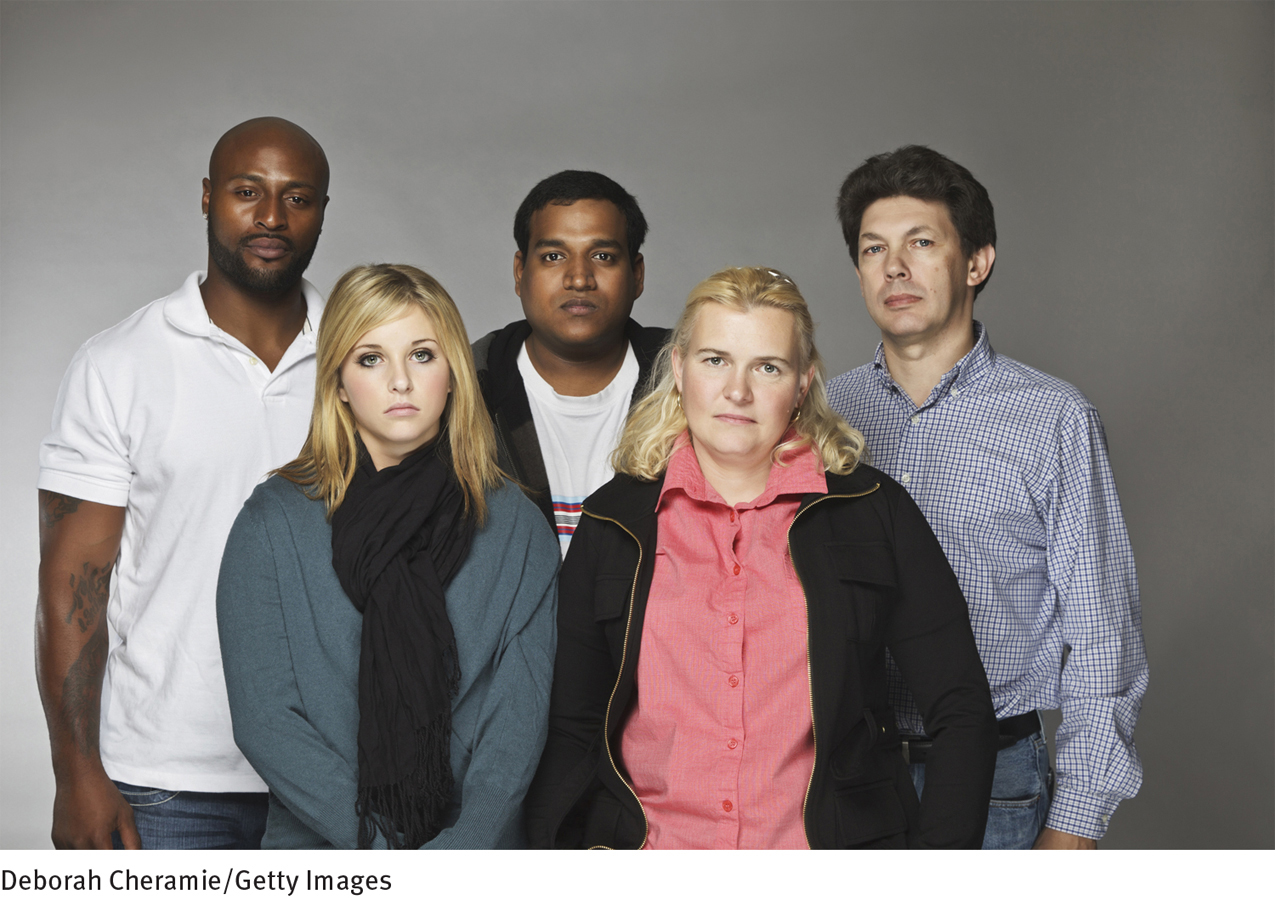16.4 Multicultural Factors: Research Neglect

BETWEEN THE LINES
Personality Disorder Demographics
|
19% |
Percentage of people with severe personality disorders who are racial or ethnic minority group members |
|
59% |
People with severe personality disorders who are male |
|
6% |
People with severe personality disorders who are unemployed |
|
23% |
People with severe personality disorders who have never married |
|
10% |
Impoverished people with borderline personality disorder |
|
3% |
Wealthy people with borderline personality disorder |
|
(Information from: Sareen et al., 2011; Cloninger & Svrakic, 2005) |
|
According to the current criteria of DSM-
The lack of multicultural research is of special concern with regard to borderline personality disorder, the pattern characterized by extreme mood fluctuations, outbursts of intense anger, self-
Around 75 percent of all people who receive a diagnosis of borderline personality disorder are female. Although it may be that women are biologically more prone to the disorder or that diagnostic bias is at work, this gender difference may instead be a reflection of the extraordinary traumas to which many women are subjected as children. Recall, for example, that the childhoods of people with borderline personality disorder tend to be filled with emotional trauma, victimization, violence, and abuse, at times sexual abuse. It may be, a number of theorists argue, that experiences of this kind are prerequisites to the development of borderline personality disorder, that women in our society are particularly subjected to such experiences, and that, in fact, the disorder should more properly be viewed and treated as a special form of posttraumatic stress disorder (Sherry & Whilde, 2008; Hodges, 2003). In the absence of systematic research, however, alternative explanations like this remain untested and corresponding treatments undeveloped.
In a related vein, given the childhood experiences that typically precede borderline personality disorder, some multicultural theorists believe that the disorder may actually be a reaction to persistent feelings of marginality, powerlessness, and social failure (Sherry & Whilde, 2008; Miller, 1999, 1994). That is, the disorder may be attributable more to social inequalities (including sexism, racism, or homophobia) than to psychological factors.
Given such possibilities, it is most welcome that at least a few multicultural studies of borderline personality disorder have been conducted over the past decade. In one, researchers assessed the prevalence of the personality disorder in racially diverse clinical populations from across the United States (Chavira et al., 2003). The study found that disproportionately more Hispanic American clients qualified for a diagnosis of borderline personality disorder than did white or African American clients. Could it be that Hispanic Americans generally are more likely than other cultural groups to display this disorder, and—
Finally, some multicultural theorists have argued that the features of borderline personality disorder may be perfectly acceptable traits and behaviors in certain cultures (APA, 2013). In Puerto Rican culture, for example, men are expected to display very strong emotions like anger, aggression, and sexual attraction (Sherry & Whilde, 2008; Casimir & Morrison, 1993). Could such culture-